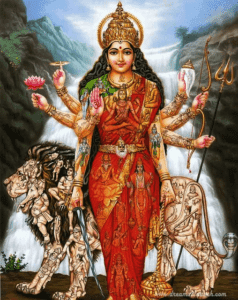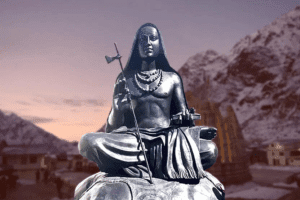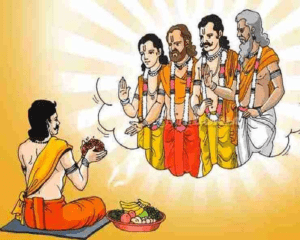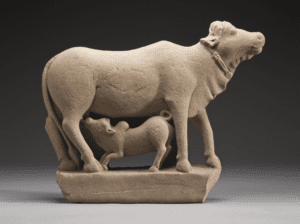Among the many currents of Hindu thought, one idea stands apart for its audacity and power: the belief that the ultimate reality itself is feminine. This is Adi Shakti — the Primordial Power, the boundless energy from which the universe arises, by which it is sustained, and into which it ultimately dissolves. Revered as Adi Parashakti or Mahadevi, she is not one goddess among many, but the fountainhead from which all goddesses and indeed all existence flows.
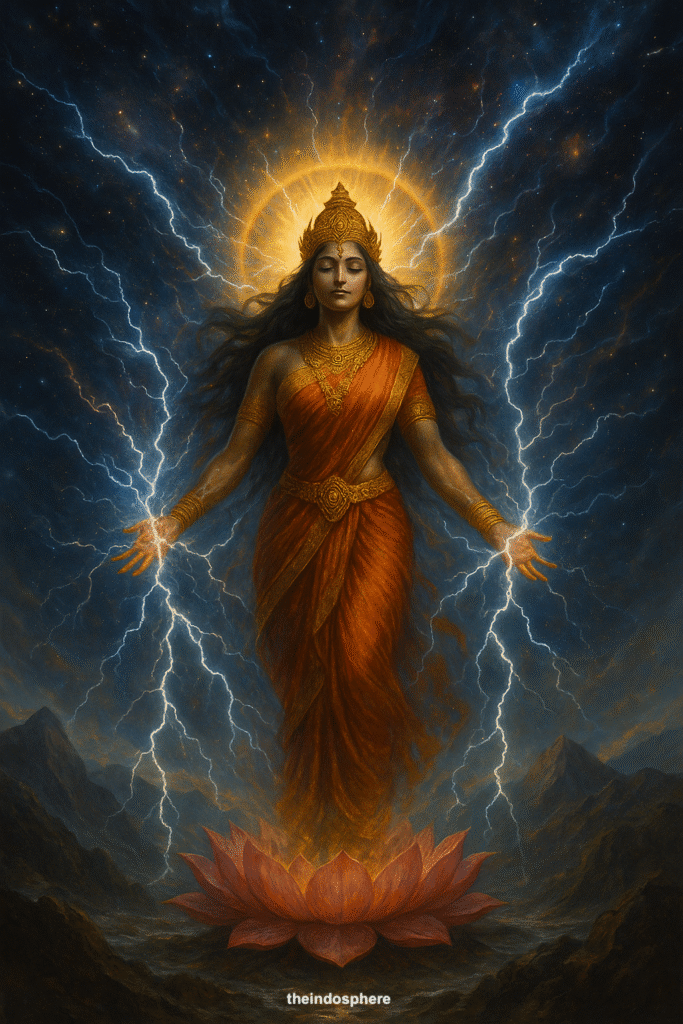
The name itself conveys her status. Adi means “first” or “primordial,” while Shakti signifies power, energy, and divine force. Together, they describe the original energy that precedes even the gods. In Shakta traditions, Adi Shakti is identified with the Para Brahman, the Supreme Reality, transcending form yet manifesting in countless forms to protect and guide the world.
The Voice of the Scriptures
The roots of Adi Shakti’s worship lie in some of Hinduism’s most important texts. The Devi Mahatmya, a portion of the Markandeya Purana dating to around the 5th–6th century CE, is the first text to declare the Goddess as supreme. Here, she is praised as the one who brings forth creation, sustains the cosmos, and destroys evil. Recited during Navaratri and Durga Puja, this scripture remains the cornerstone of Shakta practice.
The Devi Bhagavata Purana goes even further, presenting Adi Shakti as the very essence of Brahman. Its celebrated Devi Gita is a philosophical discourse where the Goddess speaks of herself as both transcendent and immanent, both without form and as manifest in every form. Other texts, such as the Lalita Sahasranama and the Devi Upanishad, deepen this vision, offering devotional poetry and tantric philosophy that expand upon her nature.
Supreme Power, Infinite Forms
One of the central teachings of the Shakta tradition is that Adi Shakti is both formless and with form. As the infinite, she is beyond attributes, timeless and vast. But as the personal Goddess, she takes on forms suited to the needs of the world. When evil threatens, she appears as Durga, riding her lion and slaying demons. When fierce transformation is needed, she emerges as Kali, dark and terrible, consuming ignorance and ego. As Lakshmi she blesses with abundance; as Saraswati she flows as wisdom and art; as Tripura Sundari she is the radiant beauty of consciousness itself, celebrated in the Sri-Vidya tradition.
Through these manifestations, devotees experience her countless aspects, from the nurturing mother to the fierce protector, from the giver of knowledge to the destroyer of illusion. The theology behind this is clear: while she may wear many faces, these are all expressions of the one Adi Shakti.
Symbols of the Goddess
The imagery of Adi Shakti is rich with symbolism. In her popular forms she rides a lion or tiger, representing sovereignty and fearlessness. Her many arms carry weapons and symbols, each standing for her ability to confront obstacles and restore balance. Colors also speak: red expresses the dynamism of creation, while black and blue suggest dissolution and transcendence.
For practitioners of Sri-Vidya, her highest form is not a human image but a geometric one — the Sri Yantra. This sacred diagram of intersecting triangles represents the universe itself, with the Goddess at its heart. To meditate upon the Sri Yantra is to meditate upon Adi Shakti in her most profound, cosmic dimension.

Festivals, Temples, and Living Worship
The devotion to Adi Shakti is not confined to philosophy or ancient texts; it permeates lived religion. Every autumn, millions celebrate Navaratri and Durga Puja, nine nights of worship when the Devi Mahatmya is recited and the Goddess is honored in her victorious form. Across India, her shrines form a sacred geography of power. The Shakti Peethas, legendary seats of the Goddess’s presence, include places such as Kamakhya in Assam, famed for its tantric traditions, and Vimala in Puri, nestled within the Jagannath temple complex.
At these sites, and in countless households, Adi Shakti is worshipped daily with offerings, chants, and rituals that affirm her role as the heartbeat of creation. The Sri-Vidya tradition adds another layer, with its complex worship of Lalita Tripura Sundari through mantra, yantra, and meditative practice, all aimed at realizing the unity of Shakti and consciousness.
The Philosophy of Power
Underlying all these practices is a profound vision of reality. Shaktism teaches that Adi Shakti is not merely divine energy serving some higher god; she is the highest principle herself. Even Brahma, Vishnu, and Shiva, the great trinity, act only through her power. Philosophers describe her as performing five cosmic acts: creation, preservation, destruction, concealment, and grace. In this way she is at once the material substance of the universe and its guiding intelligence.
This non-dual vision, often called Shaktadvaita, sees no separation between the world and the divine. Consciousness (Shiva) and energy (Shakti) are two aspects of the same reality, inseparable and eternal. To approach Adi Shakti, then, is to approach both the outer universe and one’s own inner self.
Why Adi Shakti Matters
For devotees, Adi Shakti is not an abstract concept but a living presence. She is the Mother of the universe, both awe-inspiring and intimate, fierce and compassionate. To her belongs the credit for every heartbeat, every breath, every act of creation. To worship her is to recognize the sacred energy that animates all existence.
For seekers and students, she offers a path to understanding the balance of consciousness and energy, the interplay of the transcendent and the immanent. Through her stories, symbols, and scriptures, she speaks of a reality that is at once vast and personal, terrifying and nurturing.
Adi Shakti is not just one goddess among many. She is the beginning and the end, the source and the substance, the eternal feminine power without which nothing could exist. In her, the universe finds both its mother and its destiny.

